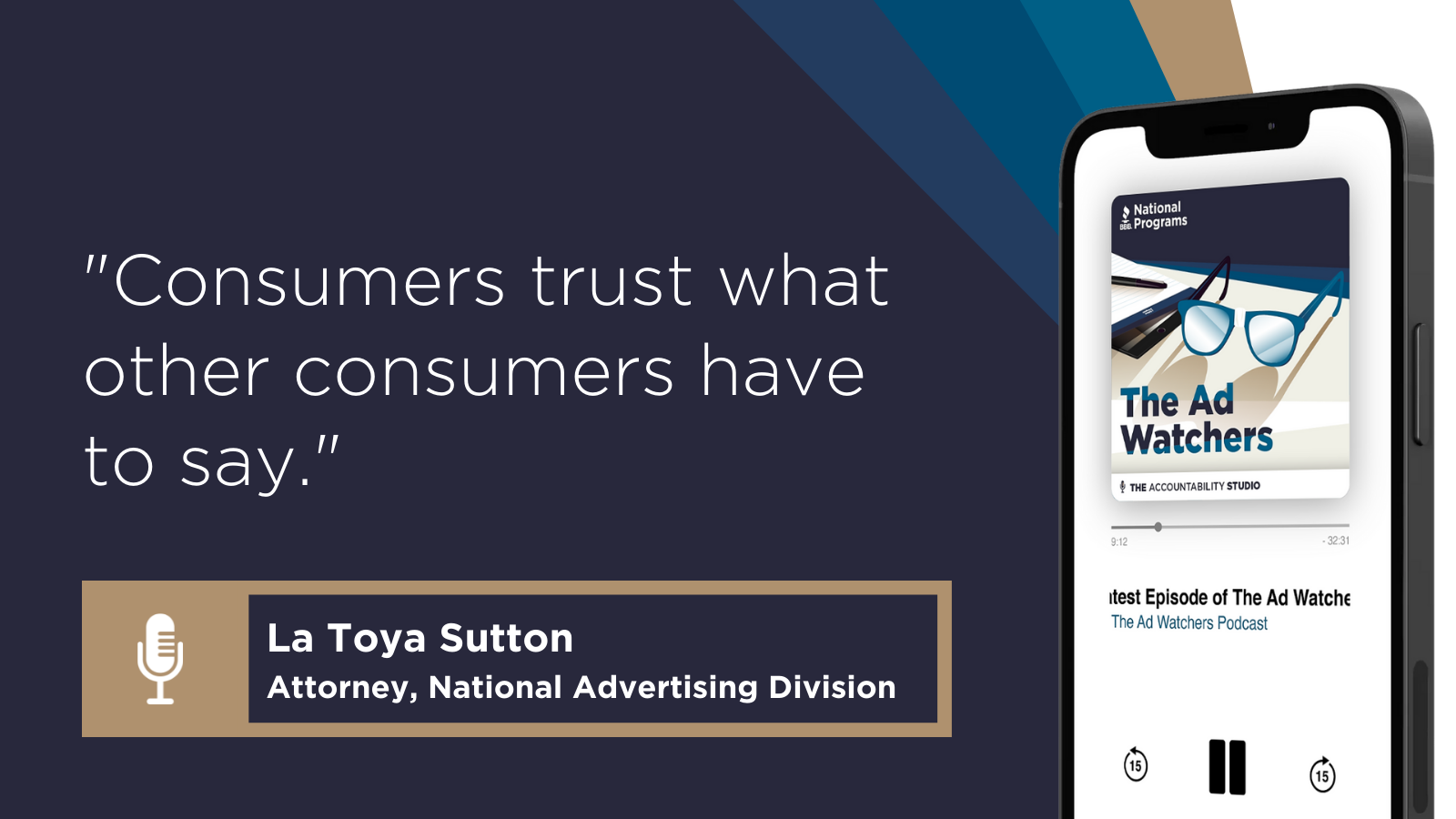
In this episode of the Ad Watchers, Hal and La Toya discuss endorsements and testimonials. Their conversation also takes a deeper look into the broader category of user-generated content in advertising.
They began the conversation by talking about the Federal Trade Commission’s (FTC) Endorsement Guides, which offer good insights for the National Advertising Division (NAD) and the industry. They, along with several NAD decisions on the topic and the additional guidance from the FTC, cover the basics of how to use endorsements and testimonials in advertising.
La Toya outlined how endorsements and testimonials should:
- Be the honest opinion or belief of the endorser
- Not make a claim that the advertiser could not otherwise make itself.
- Only utilize expert endorsements that are relevant to the advertised product.
- Properly disclose material connections between the endorser and the advertiser.
While the FTC offers substantial guidance on this topic, since endorsements and testimonials are very persuasive claims that are influential to other consumers, they continue to require scrutiny to ensure brands truthfully leverage these voices.
Hal and La Toya discuss how the current digital environment stresses the importance of understanding the lines between user-generated content versus testimonials versus endorsements. La Toya identified two extremes of interacting with user-generated content as an advertiser.
- Advertisers are not responsible for anything and everything that consumers say in the marketspace.
- The Consumer Review Fairness Act protects consumers by making it illegal to prohibit honest reviews or threaten legal action over them.
In the middle of this area, there are various ways brands can interact with user-generated content that still trigger responsibility for that content. Numerous NAD cases provide guidance on this matter, and in this episode, Hal and La Toya spoke about four of them.
- Pyle Audio: This case highlights how incentivized reviews and dividing the audience based on their experience with an experience can shape consumer-generated content. It addresses the need for transparency when consumers leave a review to receive a free product because it can influence how others view the brand. Learn about this case and NAD’s decision here.
- TaxSlayer: This case addresses the importance of consumers receiving a reliable, representative of what other consumers are saying about a product or service. Learn about this case and NAD’s decision here.
- APEC: This case provides an example of a brand’s responsibility, or lack thereof, over misleading claims. It considers various factors and highlights the importance of reflecting on how you interact with reviews in general. Learn about this case and NAD’s decision here.
- Dimensions: This case offers a good example of how even when you believe you have done everything correctly, there are still issues that can come up. Learn about this case and NAD’s decision here.
In all these cases, there was an overlapping theme of how these seemingly small influences and incentive structures can have a large impact on businesses.
To further help the listeners understand this topic, Hal and La Toya presented a hypothetical situation where La Toya was the CEO of Sutton’s Cogs and Widgets. In this scenario, consumers can leave reviews on La Toya’s website. Hal proposed the question of when would La Toya be responsible for the reviews and when would they require substantion. This consideration often becomes even more intricate when you move onto social media
As technology continues to evolve, Hal and La Toya noted that there will be a learning curve. They said that the goal is never to stifle innovation or limit engagement with consumers. Instead, they want to ensure that consumers can attribute credibility to a statement based on their assessment of the influences at play. The importance of protecting credibility was also emphasized in the tips and takeaways of the episode, with Hal reminding brands to always “disclose, disclose, disclose,” when there is a connection that could impact the credibility of what is being said.
Visit to Learn More: NAD FAQ’s
Contact Information: nad@bbbnp.org

